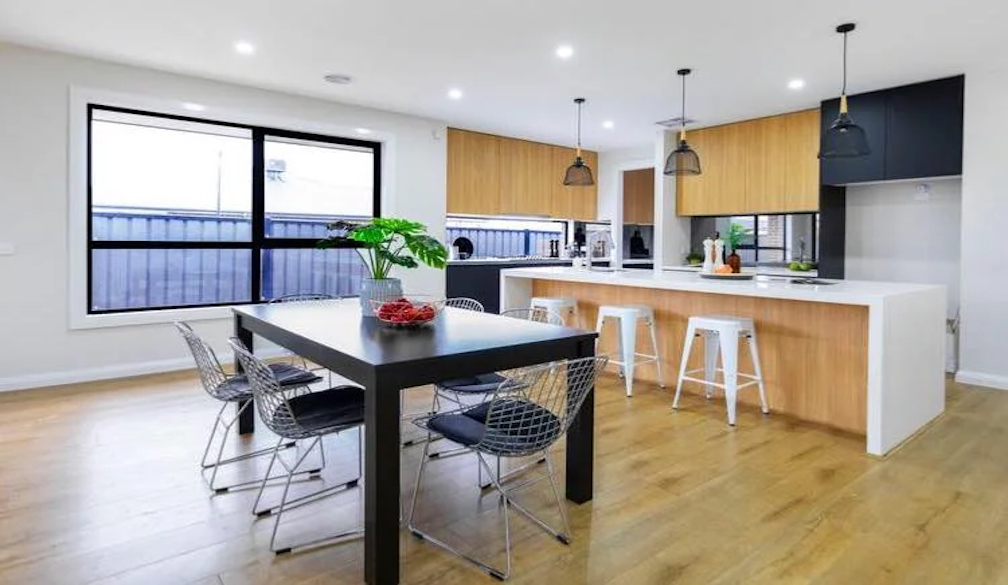What is Cargotecture?
- Written by NewsCo

The construction industry continues to adapt to ideas such as greener buildings and that means using materials that are sustainable and reducing waste. What Is Cargotecture? Cargotecture is the use of steel shipping containers to design and build accommodations and other types of buildings. These containers have been used as a main component for worldwide trade over the last 60 years and these large containers are generally available in 20- or 40-foot lengths. These containers are being used as recycled building materials that can be used to build homes or commercial spaces.
Worldwide there are millions of shipping containers that are being stored and are sitting unused. The containers sit because it costs too much money to return them back to their original location. Shipping containers are used in many types of projects, from affordable housing to luxury homes and this is saving them from being sent for scrap metal. What are the pros and cons of cargotecture?
There are pros and cons to cargotecture. Here are some of the pros:
Affordable
Shipping containers are ideal for being repurposed into different types of buildings. When compared to traditional buildings, the cost of cargotecture is thirty per cent less. The amount of money that you save will largely depend upon the location of the build site and the type of home that you want to construct. A cargotecture home is not the same as a traditional home build. If you are looking to save money, you will need to make certain compromises. This will allow you to upgrade your home and get features that you want while using less money. Cargotecture will save you money because the shipping containers act like modular components which you can connect to one another and then upgrade.
Solid Structure
Steel shipping containers are designed to carry large and heavy loads over rough oceans and are designed to be completely indestructible. Hurricane force winds cannot destroy shipping containers, and this makes them a great option for building in areas that are at risk for natural disasters.
Faster Speed of Construction
Traditional houses can take a long time to build, from many months to many years, but when you are utilizing cargotecture, you just need a few weeks to connect the units together. Modifications to shipping containers can be completed off site, making the build much easier than one that requires traditional building materials. It is simple to create a customized layout by stacking the containers to create multiple floors and then connecting them to create a much larger space.
There can be a lot of modification to be done with shipping containers but that mostly depends on the design that you want. Steel reinforcement can be added in to ensure that the building is solid and sturdy. Since heating and cooling can be a problem, you will need to properly insulate the container and seal it correctly to prevent heat from escaping.
Recycling/Repurposing Materials
Shipping containers that are used in cargotecture are a good way to be eco-friendly because you are repurposing shipping containers instead of sending them for scrap metal. Not having to recycle these containers can lower carbon emissions and eliminate the need for traditional building materials.
Security
It is virtually impossible to break in to a cargotecture building. This makes these containers ideal for building projects in remote or rural areas.
These are a few of the Cons in using shipping containers for cargotecture:
Meeting Building Codes
Since the area of cargotecture building is recent, there may be some issues around building codes. Even small structures crafted from shipping containers that do not use traditional building materials should be checked to see if they follow local building codes and regulations.
Health Risks
Shipping containers are not something that is designed for human occupation. Some shipping containers contain lead-based paints and chemicals on the floors and walls that are not safe to be inhaled. If you plan to live inside a container that has been painted with a lead-based paint or has arsenic on the flooring, you will need to have those materials removed before living inside of the home.
Controlling the Temperature
You will need to make many modifications with cargotecture, and one concern is the insulation and the control of heat so that it will not escape. Shipping containers can absorb and transmit both heat and cold so controlling the heat inside of your container can be challenging.
But is it Green?
Cargotecture may not be as green as you might think. Some people think that they should use new containers rather than recycling old shipping containers. This is circumnavigating the concept of cargotecture and its purpose of upcycling. Making a container safe to live in requires modifications including cutting windows and doors and doing special sandblasting. Moving the container to a specific location requires a large amount of fossil fuels and this can make the ecological footprint larger.
There are many considerations if you are thinking about cargotecture. One thing is for sure, you will save money over using traditional building materials. If you want to have a home put together quickly while cutting costs, this is the way to go.
Image from Tiger Containers









